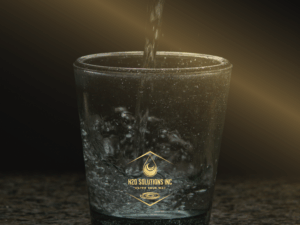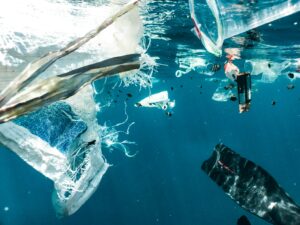Chemical manufacturing changed more than the ingredients in various liquid products; it radically changed a variety of consumer products, from electronics to cooking equipment. When these chemicals make their way into the water supply, the health effects can be detrimental, such as perfluorooctanoic acid (PFOA) and perfluorooctanesulfonic acid (PFOS).
To get a better understanding of why caring for drinking water, our water supply, and the importance of having water filtration for yourself, let’s look into what PFOA and PFOS in drinking water are and what it does.
What are PFOA and PFAS?
PFAS included thousands of sub-types, some more widely used than others, but are a group of manufactured chemicals that were used in industry and consumer products beginning in the 1940s. PFOA is a member of the PFAS group and is one of the most widely used chemicals within it, now replaced with another type of chemical for product manufacturing that began in 2000.
During the manufacturing of these chemicals, before phasing them out of production, large quantities of PFOAs were released into the environment around the globe. The repeated leaking of the chemical led to it being found in drinking water supplies near former manufacturing locations and airports, leading to a lot of concern over the health effects on humans.
One of the primary concerns of the PFAS group is that they break down very slowly, allowing concentrations to build in people, animals, and the environment causing greater effects.
What are the Effects of PFOS on Drinking Water?
As PFOS has been found throughout the world, knowing how it can build up within the body, led scientists to study it extensively. The manufacturing process allowed PFAS, the group PFOS belongs to, to seep into the water, air, and soil via discharges from sewage treatment plants, landfills, and the use of fire-fighting foams.
The worldwide exposure led to investigations that found that exposure to PFOA and PFOS has severe health effects, including cancer, issues with the immune system, liver and thyroid problems, and impact on a developing fetus or infant. The health risks led the Environmental Protection Agency (EPA) to test water sources around the country, alerting communities to PFOA levels through health advisory level warnings.
To be clear, the effects of PFOA and PFOS are from long-term exposure and not an immediate consequence.
PFOA and PFOS Levels in Eastern Washington and Northern Idaho
Over 50 water systems throughout Washington state have recorded levels above the EPA’s limit of PFAS, leading the federal government to give the state around $17 million annually until 2026 to clean the water systems and achieve compliance. The EPA’s proposed limits are set at 4 parts per trillion, which is less than half the advisory levels placed by the Washington Board of Health in 2021, perhaps lending itself to the high amounts of PFOA found in the Spokane River, Vancouver wells, water systems in the Lakewood Water District, and public water systems around Western Washington’s Joint Base Lewis-McChord.
Public Utilities companies are already working to clear out PFAS throughout Washington state, aligning with the EPA’s proposed limit and regularly testing waterways to better public health.
How do you Remove PFOA and PFOS from Drinking Water?
The first thing to know is that boiling water with PFOA/PFOS won’t remove them, instead, it concentrates the chemicals. This is important to know if a water advisory has been released in your area. Make sure to follow the advice of your municipal water authority if an alert has gone out for water used for drinking, cooking, bathing, dishwashing, and for pets.
To stop any that may exist in the water, whether a watery advisory has gone out or not, there are several water filters that work for PFAS:
- Point-of-Use (POU) Filters: These are filters that attach to the faucet or shower head.
- Whole House Water Filters: These filters are usually installed in the basement, garage, or wellhouse, and treat all water that flows into the home from the external water system.
Please note that not all water filters are effective at removing PFAS. Look for filters that have been independently tested by a third party and have been certified as removing PFAS, have activated carbon, anion exchange, and/or high-pressure membranes. All these techniques are available for in-home filters.
If you’re concerned that your water may have PFAS, you can ask your public water works if they have tested for it. If your water flows from a private well, you can ask your local government if PFAS have been found near the well and have your water tested by a private company. Remember, contamination nearby doesn’t necessarily mean the drinking water has been exposed, but may indicate whether you should invest in testing the well or not.
Taking Action: Protecting Your Health and Safety
Chemicals seeping into our drinking water is a serious issue that the EPA is working to eliminate, but there are ways to protect yourself from being exposed to PFOA and PFOS in your water supply:
- Use a Certified Water Filter: Install and regularly maintain a water filter certified to remove PFOA and PFOS from drinking water. Look for filters with NSF/ANSI Standard 53 or 58 certification specifically for PFOA and PFOS removal.
- Test Private Wells: If you rely on a private well for drinking water, consider testing it for PFOA and PFOS contamination. Contact your local health department or a certified laboratory for testing options.
- Limit Exposure to Contaminated Water: If you’re aware of PFOA or PFOS contamination in your water source, consider using an alternative water source for drinking and cooking until the issue is resolved.
- Boil Water: Boiling water does not remove PFOA and PFOS but may concentrate contaminants. Avoid boiling contaminated water.
- Stay Informed: Stay updated on water quality reports and advisories issued by local authorities. Follow any recommendations or guidelines provided to minimize exposure.
- Avoid Recreational Water Sources: Avoid swimming or engaging in recreational activities in water bodies known or suspected to be contaminated with PFOA or PFOS.
- Report Concerns: If you suspect PFOA or PFOS contamination in your water supply, report your concerns to your local water utility or environmental agency. They can investigate and take appropriate action.
H20 Solutions delivers water your way by empowering individuals with safeguards to improve the water in their homes. From EcoWater Systems in the home to SimpleLab testing kits, we are committed to cleaner water throughout the Pacific Northwest.
Explore how to stop PFOAs and PFOSs in your drinking water below.
Questions? We’re Here to Help
Navigating the maintenance and care of your EcoWater treatment system is vital to ensuring its lasting efficiency and performance. Whether it’s understanding salt maintenance, troubleshooting regeneration issues, or planning system deep cleaning, our team, as an EcoWater Systems distributor, is here to assist you every step of the way. Contact us today.




